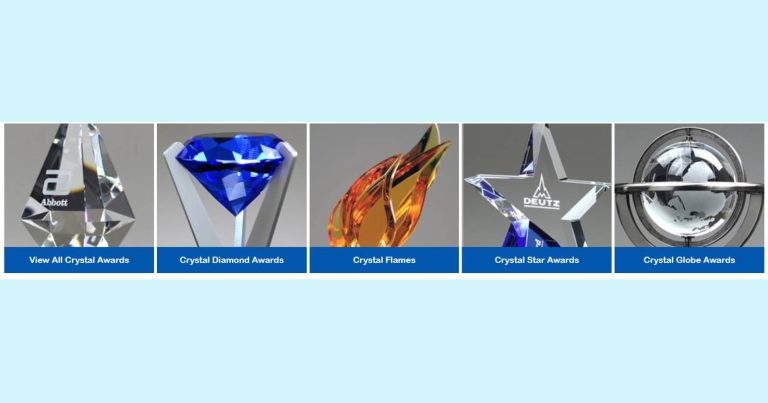Disclaimer: This is a user generated content submitted by a member of the WriteUpCafe Community. The views and writings here reflect that of the author and not of WriteUpCafe. If you have any complaints regarding this post kindly report it to us.
The subtle art of user experience (UX) design plays a pivotal role in sculpting a user's journey and emotional connection with a platform. One powerful element that can significantly elevate this experience is the integration of recognitions such as trophies and awards. These recognitions have become strategic tools that enhance user engagement and satisfaction, acting as milestones and motivators in the digital landscape.
The inclusion of recognitions in UX design must adhere to fundamental design principles to ensure they contribute positively to the user experience. These principles include clarity, relevance, and timeliness. Clarity ensures that the recognition is easily understood and its significance is apparent. Relevance ties the recognition directly to meaningful user actions, reinforcing behaviors that the platform seeks to encourage. Timeliness ensures that the recognition is awarded in a moment that maximizes its impact, ideally right after the user has performed the desired action.
Recognitions should be visually integrated into the design in a way that feels cohesive with the overall aesthetic of the platform. This helps maintain the user’s immersion and connection with the user interface. The design of the trophies themselves should also resonate with the brand’s identity, creating a seamless experience that reinforces the brand’s values and aesthetic.
User Motivation and Technological Integration

At its core, integrating trophies and other forms of recognition into UX design taps into fundamental aspects of human psychology. These elements serve as extrinsic motivators, encouraging users to engage more deeply with the platform. From a psychological perspective, recognitions fulfill several human needs: the need for competence, autonomy, and relatedness. When users receive a trophy, it not only signifies achievement but also boosts their confidence in their own abilities, encouraging further interaction and exploration.
Such recognitions can be tailored to encourage users to explore less utilized features of a platform or to continue their engagement over longer periods. By strategically placing these awards, designers can guide user behavior in subtle yet impactful ways.
The technological aspect of integrating recognitions into UX design focuses on the seamless incorporation of these systems into the platform's infrastructure. This involves more than just the front-end display of trophies; it requires a substantial back-end system capable of tracking user actions, managing rewards, and personalizing the experience. Advanced algorithms can be employed to ensure that recognitions are awarded in a fair and timely manner, which is crucial for maintaining user trust and interest.
Artificial intelligence (AI) and machine learning (ML) can also play a role in refining these recognition systems. By analyzing user data, AI can help tailor recognitions to the preferences and behaviors of individual users, making the rewards feel more personal and relevant. This customization enhances the user's emotional engagement with the platform, making each achievement feel genuinely rewarding.
The Perks of Successful Implementation

The benefits of integrating recognitions into UX design are manifold. Firstly, they increase user retention by giving users a reason to return to the platform. Each recognition acts as a milestone that users want to achieve, creating a loop of engagement where users are motivated to achieve more.
Several platforms exemplify the successful integration of recognitions into UX design. For instance, educational platforms like Duolingo use badges and trophies to mark milestones in a learner's journey, significantly boosting engagement and long-term usage. Similarly, fitness apps like Strava award trophies for personal bests and other achievements, which motivates users to push their limits.
These recognitions enhance user engagement by making the interaction more rewarding. Users feel recognized and valued, which increases their emotional investment in the platform. When these recognitions are aligned with the platform’s goals, they drive user behavior in desired directions, thereby supporting the overall strategy of the platform.
In the corporate setting, LinkedIn’s endorsement and recommendation features act as professional recognitions that enhance user profiles, adding value both for the individual and their network. These recognitions motivate users to enhance their skills and profiles while building a professional community platform.
Ultimately, integrating recognitions like trophies into UX design is more than just a gamification tactic; it's a strategic approach to deepening user engagement and enhancing satisfaction. These elements, when well-integrated, resonate with users on a psychological level and motivate them to achieve more, stay longer, and feel more connected to the digital environment.
As digital landscapes evolve, UX designers are encouraged to think creatively about how these systems can be tailored to meet the specific needs of their user base. The potential impact of well-implemented recognitions in UX design is vast, promising to enhance user experience as well as drive the platform's growth and success. Designers must harness this powerful tool thoughtfully and make sure that recognitions are meaningful, well-timed, and perfectly aligned with both user expectations and brand objectives.





